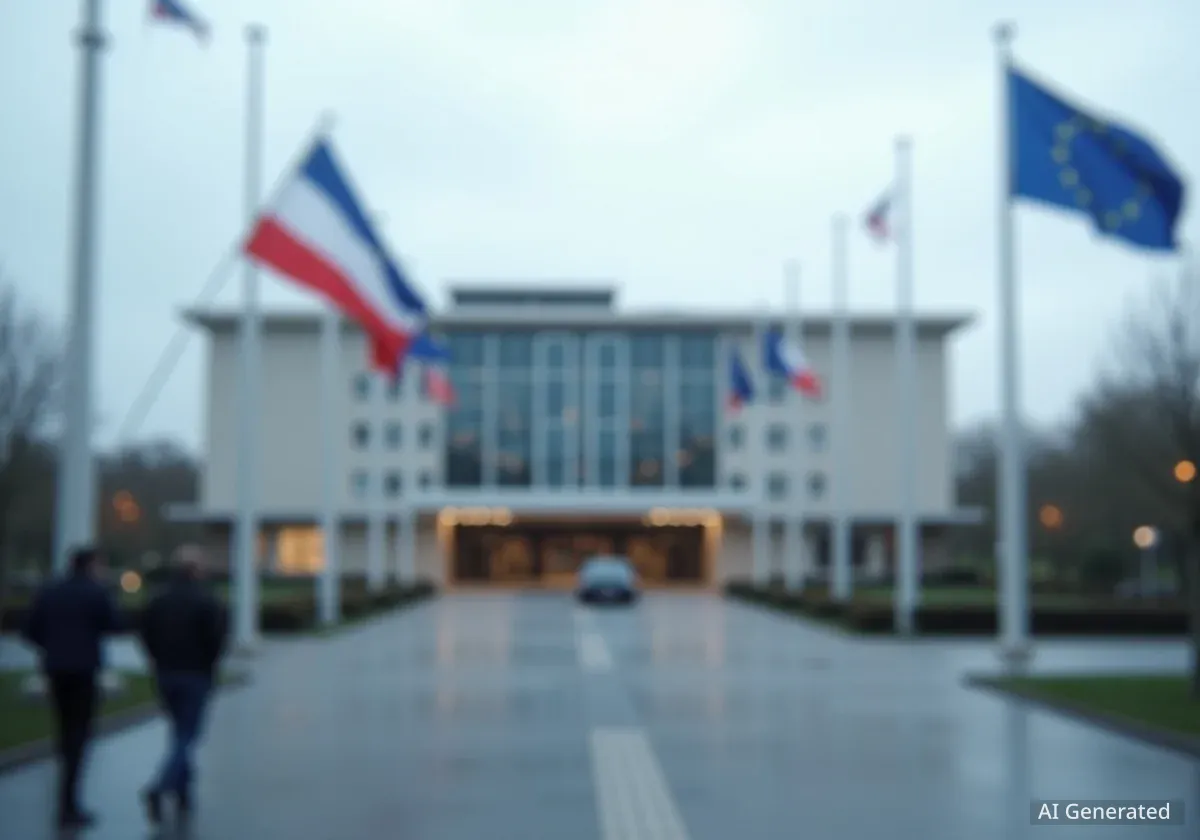The European Union’s top defence official addressed NATO’s North Atlantic Council on Tuesday, reinforcing the deepening partnership between the two organizations as they navigate a complex European security landscape. The meeting underscored a shared commitment to bolstering regional stability and coordinating defence strategies.
EU Commissioner for Defence and Space, Andrius Kubilius, met with NATO ambassadors in a session chaired by Secretary General Mark Rutte. Discussions focused on the EU's strategic initiatives and how they complement NATO's collective defence mission, particularly in light of ongoing regional conflicts.
Key Takeaways
- EU Commissioner Andrius Kubilius briefed the North Atlantic Council on November 4, 2025, marking his third appearance.
- NATO Secretary General Mark Rutte welcomed the EU's contributions to regional security and its Defence Readiness Roadmap 2030.
- The meeting emphasized a "clear division of labour" to ensure the two organizations' efforts are complementary, not duplicative.
- Key EU proposals include boosting defence investment, increasing industrial production, and providing sustained, long-term support for Ukraine.
A United Front in Brussels
In a significant display of transatlantic unity, EU Commissioner Andrius Kubilius outlined the European Union's latest defence ambitions to NATO's primary decision-making body. The meeting, held on November 4, 2025, served as a platform for dialogue on strengthening European security architecture.
NATO Secretary General Mark Rutte, who chaired the council, acknowledged the EU's growing role. He specifically highlighted the importance of the bloc's contributions to stability and welcomed the strategic alignment between the two institutions. The dialogue is seen by officials as crucial for ensuring that efforts on both sides of the Atlantic are synchronized.
This was Mr. Kubilius's third engagement with the North Atlantic Council, a fact that signals an established and regular channel of high-level communication. Observers note that such frequent meetings are essential for navigating shared challenges and coordinating responses effectively.
The Defence Readiness Roadmap 2030
Central to the discussion was the EU’s Defence Readiness Roadmap 2030. This comprehensive plan represents a significant step by the European Union to enhance its own military capabilities and defence-industrial base. Commissioner Kubilius detailed the roadmap's core objectives to the NATO ambassadors.
Key pillars of the strategy include:
- Increased Defence Investment: A coordinated push for member states to boost their defence spending to meet modern security demands.
- Enhanced Industrial Production: Proposals aimed at ramping up Europe's capacity to manufacture essential military hardware and munitions.
- Long-Term Support for Ukraine: A structured commitment to provide sustainable military and financial aid to Ukraine.
Secretary General Rutte recognized the roadmap as an "important element in building a safer Europe." This endorsement from NATO's chief reinforces the alliance's view that a stronger, more capable European defence pillar ultimately strengthens NATO itself.
Complementary, Not Competing
A recurring theme in NATO-EU discussions is the principle of complementarity. Both organizations have stressed the need for a clear division of labour. NATO remains the cornerstone of collective territorial defence for its members, while the EU is developing capabilities to act as a global security provider, particularly in crisis management and stabilization operations where NATO may not be engaged.
Defining Roles for a New Era
While the spirit of cooperation was evident, both sides were careful to acknowledge their distinct roles. Secretary General Rutte emphasized the importance of maintaining a "clear division of labour" between NATO and the EU. This distinction is vital to prevent the duplication of efforts and resources.
The established framework ensures that NATO’s role as the primary guarantor of collective defence for its allies is not undermined. At the same time, the EU’s initiatives are designed to make its member states more capable security actors, which in turn provides a stronger European contribution to the transatlantic alliance.
"The European Union’s contribution towards regional security is not just welcomed, it is essential for our shared stability," a sentiment echoed by officials present at the meeting.
This approach allows the EU to leverage its unique economic and regulatory tools to support security goals, such as imposing sanctions or funding industrial development, while NATO focuses on military interoperability and large-scale defence planning.
A Partnership in Numbers
Of the 27 European Union member states, 23 are also members of the NATO alliance. This significant overlap in membership makes close cooperation a practical necessity to ensure policy coherence and efficient use of national resources for defence.
Strengthening the Transatlantic Bond
The meeting concluded with a mutual understanding that the security of Europe and North America is indivisible. The collaboration between NATO and the EU is no longer a matter of choice but a strategic necessity. The ongoing geopolitical instability has accelerated this partnership, pushing both organizations to deepen their cooperation in areas like cyber defence, military mobility, and countering disinformation.
Commissioner Kubilius's briefing served as a clear message that the EU is committed to taking on more responsibility for its own security. For NATO, a more resilient and capable European partner means a more robust and effective alliance overall.
As the EU moves forward with its Defence Readiness Roadmap, future meetings will likely focus on the practical implementation of these goals and how they align with NATO's own strategic planning. The dialogue on November 4th has set a positive and constructive tone for this continued collaboration, ensuring that both organizations are prepared to face future challenges together.





